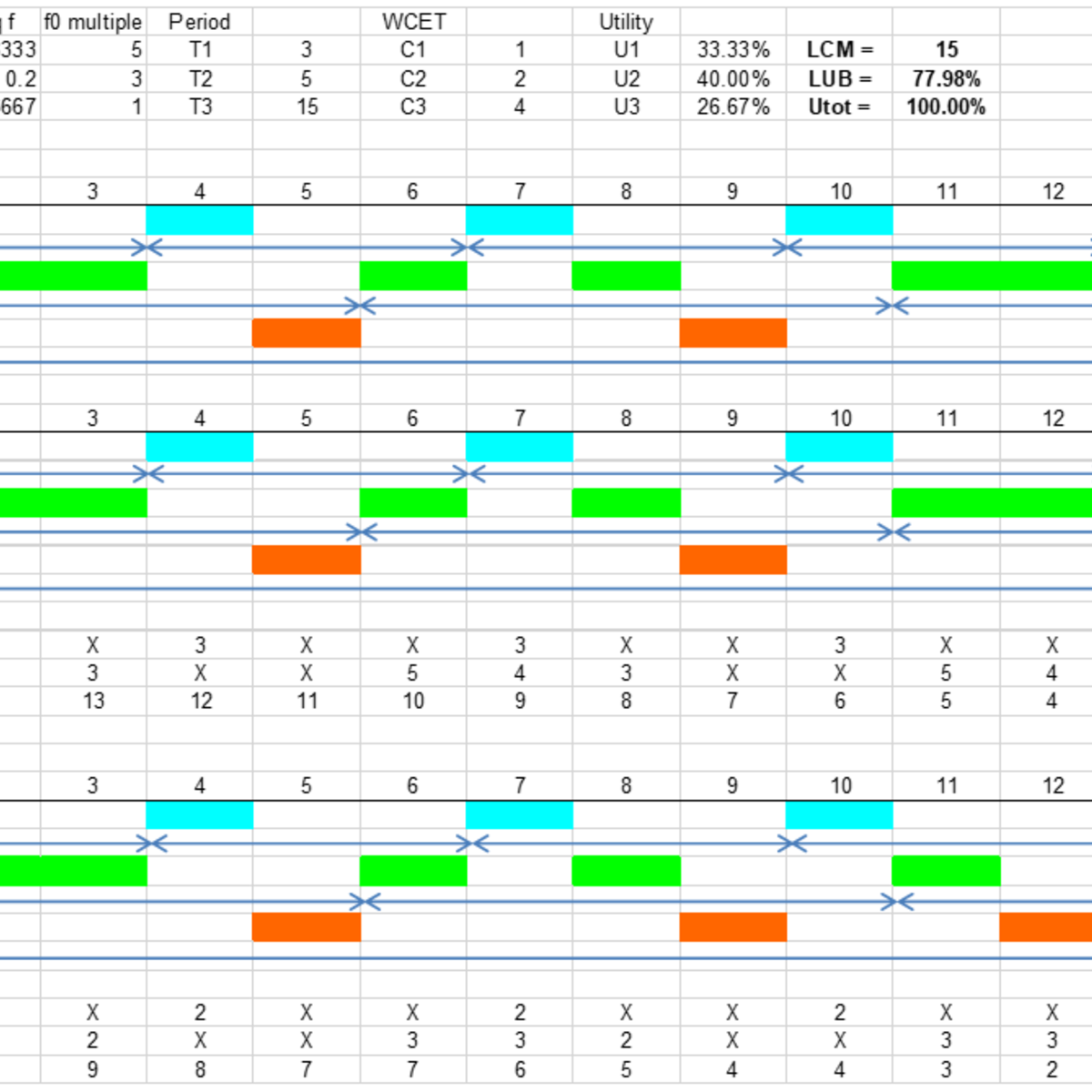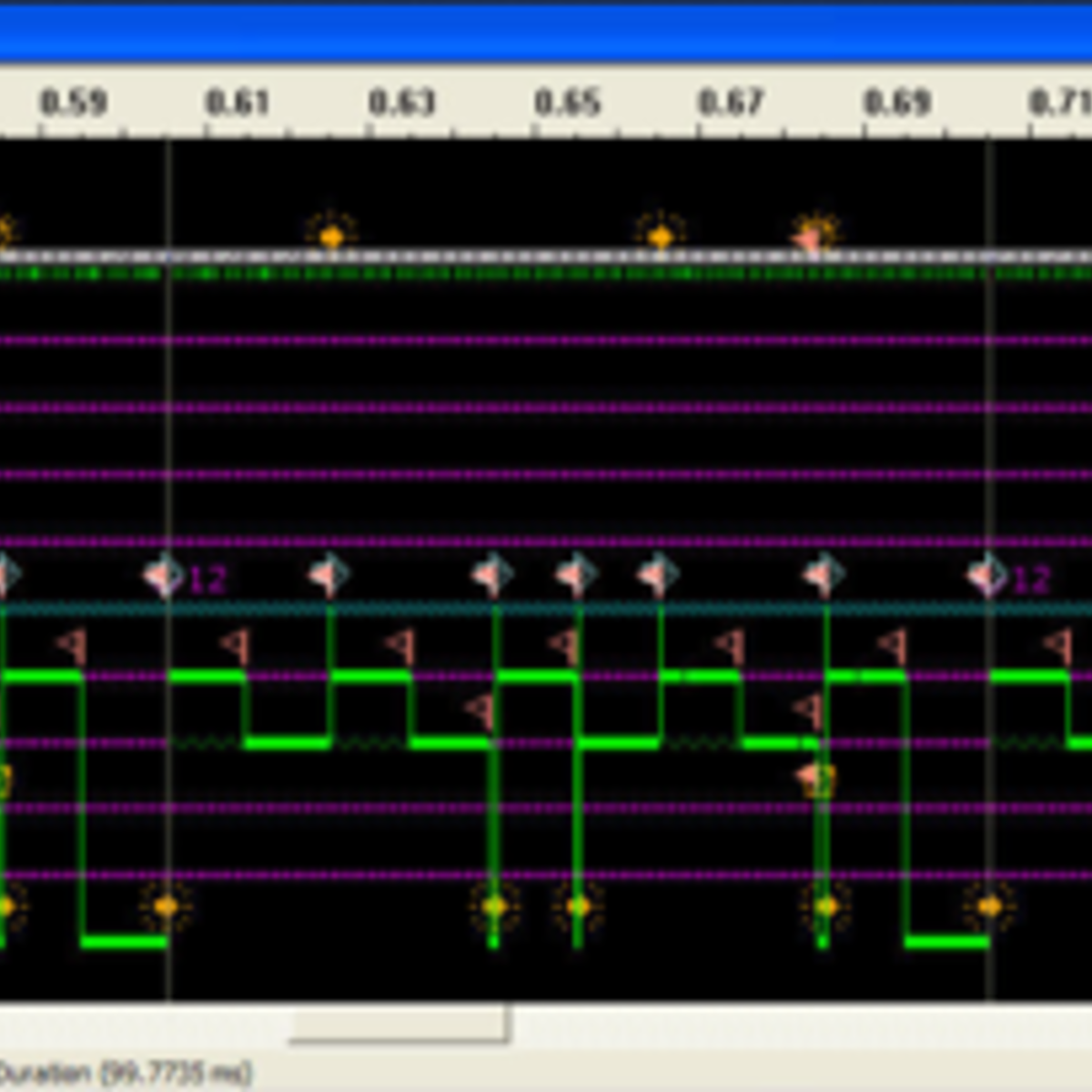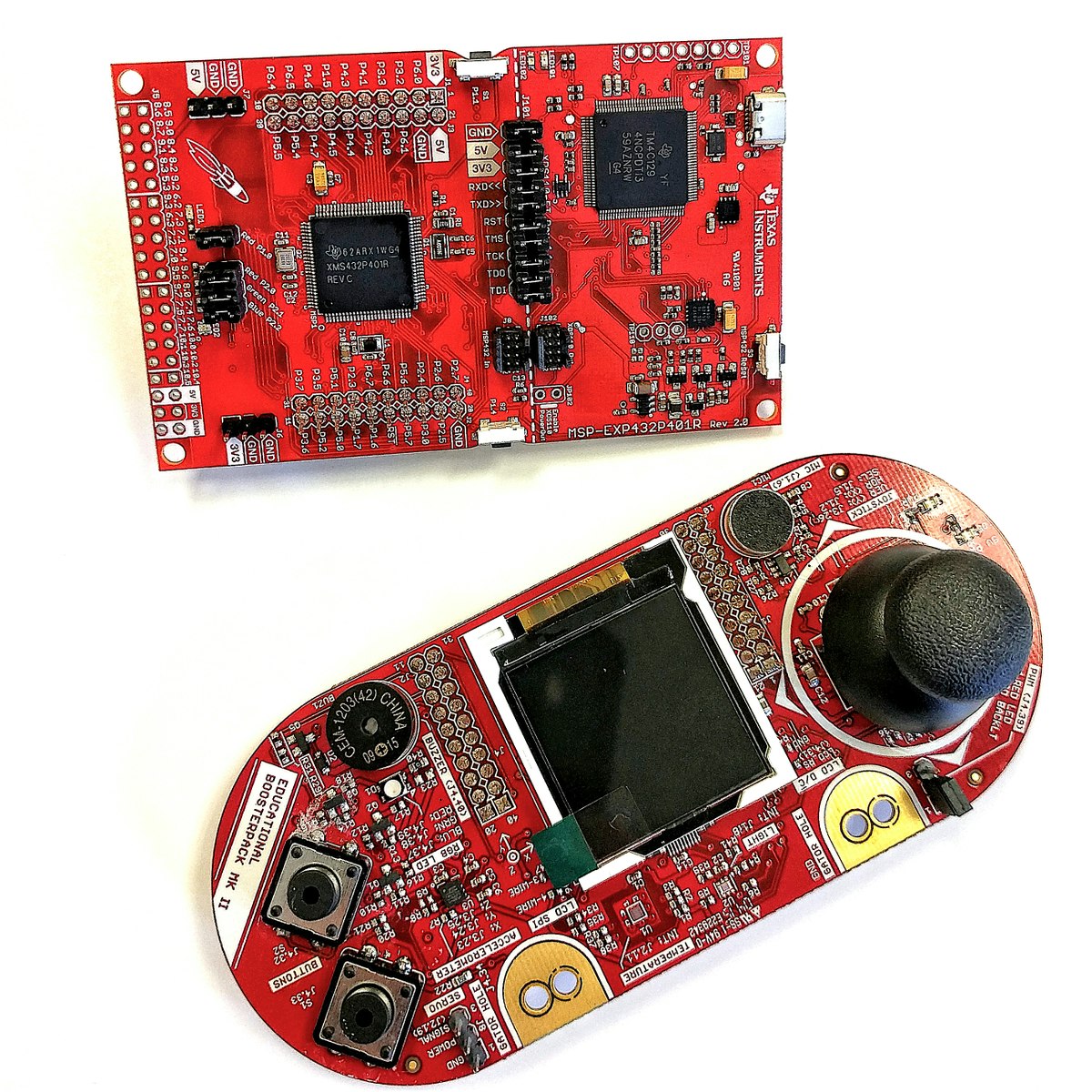Embedded Systems Programmer
Embedded Systems Programmer: Building the Brains of Modern Technology
Embedded systems programming involves creating the software that powers specialized computing systems within larger mechanical or electrical systems. Think of the hidden computers controlling your car's engine, the complex operations inside medical devices, or the smart features in your home appliances. These aren't general-purpose computers like your laptop; they are designed for specific tasks, often with tight constraints on resources like memory, processing power, and energy consumption.
Working as an embedded systems programmer means you're crafting the logic that makes these devices function reliably and efficiently. It's a field where software meets hardware directly, requiring a unique blend of programming skill and understanding of electronic principles. The thrill comes from seeing your code interact with the physical world, whether it's controlling a robot's arm, managing power in a satellite, or ensuring a pacemaker delivers life-saving pulses precisely on time.
Introduction to Embedded Systems Programming
What is an Embedded System?
Imagine a tiny, dedicated computer hidden inside another device, doing just one or a few specific jobs. That's essentially an embedded system. Unlike your phone or desktop computer, which can run many different apps, an embedded system is usually built for a singular purpose. For example, the system controlling your microwave oven only needs to handle heating times, power levels, and the clock – nothing else.
These systems are often "real-time," meaning they must respond to events within strict time limits. A car's anti-lock braking system, for instance, needs to react instantly when you slam on the brakes. This need for precision and reliability under specific constraints is a hallmark of embedded systems design.
Because they are specialized, embedded systems often use processors and components optimized for low power usage, small size, and cost-effectiveness, rather than raw speed. Programming them requires careful management of these limited resources.
To get started with the fundamentals, consider exploring introductory materials. Understanding the basics of how these specialized computers work is the first step.
These courses offer a gentle introduction to the world of embedded systems, suitable for those just beginning their exploration.
Where Do Embedded Systems Programmers Work?
Embedded systems programmers are essential in a vast array of industries. The automotive sector relies heavily on them for everything from engine control units (ECUs) and infotainment systems to advanced driver-assistance systems (ADAS). Consumer electronics like smartwatches, digital cameras, and home automation devices all contain embedded software.
Healthcare is another major area, with embedded systems powering medical imaging machines, patient monitoring devices, pacemakers, and drug delivery systems. Aerospace and defense use them in flight control systems, satellites, and communication equipment. Industrial automation, robotics, telecommunications, and the burgeoning Internet of Things (IoT) sector also offer numerous opportunities.
Essentially, any field involving smart, connected, or automated devices likely employs embedded systems programmers. The demand spans across established giants and innovative startups, offering diverse work environments.
How is it Different from Other Programming?
While sharing core programming principles, embedded systems development differs significantly from general-purpose software development (like web or mobile apps). The primary distinction lies in the tight coupling with hardware. Embedded programmers must understand the specific microcontroller or processor, its memory limitations, peripherals (like sensors and actuators), and power constraints.
Resource management is critical. Unlike a desktop PC with gigabytes of RAM, an embedded system might have only kilobytes. Code must be highly efficient in terms of memory usage and processing cycles. Reliability is paramount, especially in safety-critical applications like automotive or medical devices, where software failure can have severe consequences.
Debugging is also different. Instead of just using software debuggers, embedded programmers often need hardware tools like oscilloscopes, logic analyzers, and in-circuit emulators to diagnose problems related to timing, signal integrity, or hardware interactions. The development cycle frequently involves cross-compiling code on a host computer and then deploying and testing it on the target hardware.
Foundational Knowledge and Tools
Understanding the Hardware: Microcontrollers and Microprocessors
At the core of every embedded system lies a microcontroller (MCU) or microprocessor (MPU). An MCU is like a tiny computer-on-a-chip, integrating a processor core, memory (RAM and ROM/Flash), and input/output peripherals onto a single integrated circuit. They are self-contained and ideal for control-oriented tasks.
MPUs, on the other hand, typically contain just the processor core and require external chips for memory and peripherals. They are generally more powerful than MCUs and are used in systems requiring more complex processing, often running full operating systems like Linux. Understanding the specific architecture (e.g., ARM Cortex-M, RISC-V, AVR, PIC) is crucial for efficient programming.
This involves reading datasheets and reference manuals to learn about the processor's instruction set, memory map, peripheral registers, and electrical characteristics. This hardware knowledge informs software design choices and helps in debugging hardware-software interaction issues.
These courses delve into specific microcontroller families often used in embedded systems.
The Language of Control: C, C++, and Rust
C remains the dominant language in embedded systems programming due to its efficiency, low-level hardware access capabilities, and minimal runtime overhead. It allows programmers to manipulate memory directly and interact closely with hardware registers, which is often necessary for controlling peripherals.
C++ is also widely used, especially in larger embedded systems. It offers higher-level abstractions like classes and objects while retaining C's efficiency and hardware access capabilities. Features like templates and object-oriented programming can help manage complexity in sophisticated projects, but require careful attention to resource usage (e.g., avoiding dynamic memory allocation in real-time contexts).
Rust is emerging as a strong contender, particularly valued for its memory safety guarantees without needing a garbage collector. Its focus on preventing common programming errors like null pointer dereferences and data races makes it attractive for building reliable and secure embedded software, although its learning curve can be steeper.
These courses provide a solid foundation in C and C++, essential languages for embedded development.
These books are foundational texts for mastering C++ and Rust, offering deep dives into language features relevant to systems programming.
Keeping Time: Real-Time Operating Systems (RTOS)
Many embedded systems require predictable timing behavior, known as real-time operation. A Real-Time Operating System (RTOS) helps manage tasks, scheduling, and resources to meet these strict timing deadlines. Unlike general-purpose operating systems (like Windows or macOS) that prioritize average performance, an RTOS prioritizes determinism – ensuring tasks complete within their allocated time slots.
An RTOS provides features like multitasking (running multiple tasks seemingly simultaneously), inter-task communication (allowing tasks to exchange data), synchronization mechanisms (like mutexes and semaphores to protect shared resources), and interrupt handling. Popular examples include FreeRTOS, Zephyr, VxWorks, and QNX.
Understanding RTOS concepts is crucial for developing complex embedded applications that need to handle multiple concurrent activities reliably. Choosing and configuring the right RTOS, and designing software that works effectively within its scheduling paradigm, are key skills for embedded programmers.
This selection of courses and books covers the theory and practice of real-time embedded systems.
Finding Faults: Debugging Techniques and Tools
Debugging embedded systems can be challenging because problems might stem from software logic, hardware issues, or the interaction between them. Standard software debuggers running on a host computer are essential for stepping through code, inspecting variables, and setting breakpoints, often used in conjunction with simulators or emulators.
However, many issues only appear when the code runs on the actual target hardware. This requires specialized hardware debugging tools. An in-circuit debugger (like JTAG or SWD probes) connects the host computer directly to the microcontroller, allowing real-time inspection and control of the processor.
For analyzing timing issues or interactions with external signals, a logic analyzer or oscilloscope is indispensable. These tools capture and display digital or analog signals, helping diagnose problems related to communication protocols (like SPI, I2C, UART), sensor readings, or actuator control signals. Effective debugging often involves a combination of software and hardware techniques.
The Life of an Embedded Systems Programmer
A Typical Day: Tasks and Responsibilities
The daily routine of an embedded systems programmer often involves a mix of activities. A significant portion of time is spent writing, testing, and debugging code, typically in C or C++. This isn't just about implementing new features; it also includes optimizing code for performance and memory usage, and ensuring it meets strict timing requirements.
Reading datasheets for microcontrollers and peripherals is a common task, essential for understanding how to interface with hardware components. Programmers might spend time setting up development environments, configuring build tools, and managing different software versions using systems like Git.
Testing often involves working directly with the hardware, using debugging probes, oscilloscopes, or logic analyzers to verify functionality and diagnose issues. Documentation, code reviews, and meetings with team members (including hardware engineers) are also regular parts of the job.
Bridging Worlds: Collaborating with Hardware Teams
A defining aspect of embedded systems development is the close collaboration with hardware engineers. Software functionality is deeply intertwined with the capabilities and limitations of the chosen hardware components. Programmers need to understand the hardware design to write effective software, and hardware engineers need feedback on how design choices impact software development.
This collaboration starts early in the design process, often involving discussions about component selection, pin assignments, and interface protocols. During development, programmers provide feedback on hardware behavior, helping hardware engineers identify and fix issues revealed during testing. Conversely, hardware engineers might explain specific circuit behaviors or constraints that the software must accommodate.
Strong communication skills and a willingness to understand concepts from another engineering discipline are vital. This interdisciplinary nature is one of the unique and often rewarding aspects of the field.
Where the Jobs Are: Industries and Demand
Demand for embedded systems programmers remains strong across various sectors. As mentioned, automotive, consumer electronics, medical devices, aerospace, industrial control, and IoT are major employers. The increasing "smartness" of devices, from connected cars to intelligent home appliances, continues to fuel the need for skilled programmers who can work close to the hardware.
While specific demand can fluctuate with economic cycles and industry trends, the fundamental need for embedded software is projected to grow. Data from sources like the U.S. Bureau of Labor Statistics often groups embedded roles under broader categories like Software Developers, but highlights the specialized nature of systems software development.
Emerging areas like edge computing, autonomous systems (vehicles, drones), and wearable technology are creating new niches and opportunities within the embedded systems landscape. Proficiency in areas like real-time systems, low-power design, and security is highly valued.
Work Environment: On-Site Needs vs. Remote Possibilities
Historically, embedded systems development has often required significant on-site presence due to the need for physical access to hardware, lab equipment (oscilloscopes, logic analyzers, power supplies), and prototype devices. Debugging hardware-specific issues frequently necessitates hands-on interaction.
However, the landscape is evolving. Advances in remote access technologies, sophisticated simulators, and cloud-based development environments have increased the feasibility of remote work for certain tasks. Activities like pure software development, simulation, documentation, and code reviews can often be done effectively from anywhere.
Still, tasks involving hardware bring-up, integration testing on physical prototypes, and diagnosing complex hardware-related bugs usually demand time in the lab. Many roles adopt a hybrid model, balancing remote work flexibility with necessary on-site collaboration and hardware access.
Educational Pathways
Degrees for Success: University Programs
A bachelor's degree in Computer Engineering, Electrical Engineering, or Computer Science is the most common entry point into embedded systems programming. Computer Engineering programs often provide the ideal blend, covering both digital hardware design and software development principles.
Electrical Engineering degrees offer a strong foundation in electronics, circuits, and signal processing, which is invaluable, though they might require supplementary coursework in software development. Computer Science degrees provide deep software expertise but may need to be augmented with courses in computer architecture and digital logic to bridge the gap to hardware.
Some universities offer specialized tracks or minors in embedded systems within these broader degree programs. Regardless of the specific major, a strong theoretical foundation combined with practical, hands-on project experience is key.
Explore relevant university programs on platforms like OpenCourser's Engineering category.
Essential Curriculum: Key University Courses
Core coursework for aspiring embedded systems programmers typically includes several key areas. Foundational programming courses, especially in C and C++, are essential. Data structures and algorithms provide the tools for writing efficient code.
Courses in Computer Architecture explain how processors work internally, including concepts like instruction sets, memory hierarchies, and pipelines. Digital Logic Design teaches the fundamentals of digital circuits, gates, and state machines, often involving Hardware Description Languages (HDLs) like Verilog or VHDL.
Operating Systems courses cover concepts like processes, threads, scheduling, and memory management, many of which are directly applicable to RTOS environments. Courses specifically on Embedded Systems or Microcontroller Programming provide practical experience integrating hardware and software. Depending on the focus, courses in electronics, circuits, signals and systems, or control theory can also be highly beneficial.
These books cover core concepts often taught in university curricula related to embedded systems architecture and design.
Pushing Boundaries: Research and Advanced Studies
For those interested in pushing the frontiers of embedded systems technology, pursuing a Master's or Ph.D. degree offers opportunities for deep specialization and research. Advanced studies might focus on areas like low-power design techniques, real-time scheduling theory, formal verification methods for safety-critical systems, embedded security, or hardware/software co-design.
Universities with strong engineering programs often have research labs dedicated to embedded systems, IoT, cyber-physical systems, or robotics. Graduate students contribute to cutting-edge projects, publish research papers, and develop highly specialized expertise sought after by industry R&D departments and academia.
A Ph.D. is typically required for academic research positions or roles leading advanced research in industry. It signifies deep expertise in a specific subfield and the ability to conduct independent research and contribute novel knowledge.
Learning Online and Building Experience
Can You Learn Embedded Systems Online?
Absolutely. While hands-on hardware experience is crucial, online learning offers powerful pathways to build the foundational knowledge and software skills required for embedded systems programming. Numerous online courses cover C/C++, computer architecture, operating system concepts, and specific microcontroller platforms.
Online platforms allow learners to study at their own pace, fitting education around existing commitments. This is particularly valuable for career changers or professionals looking to upskill. While online courses might not fully replicate a physical lab, many incorporate simulations or guide learners through setting up affordable home hardware kits (like Arduino, Raspberry Pi, or specific development boards) for practical exercises.
OpenCourser aggregates thousands of courses, making it easier to find resources tailored to embedded systems across various providers. Learners can compare syllabi, read reviews, and even find deals to make learning more accessible.
Building Foundational Skills with Online Courses
Mastering programming languages like C and C++ is the first critical step. Online courses provide structured learning paths, starting from basic syntax and progressing to advanced topics relevant to embedded systems, such as pointers, memory management, bit manipulation, and low-level optimization techniques.
Understanding computer architecture and operating system principles can also be achieved through online study. These courses explain how processors execute instructions, manage memory, and handle interrupts – knowledge directly applicable to microcontroller programming and RTOS usage.
These online courses offer comprehensive introductions and deeper dives into C programming, a cornerstone of embedded development.
Diving Deeper: Specialized Online Embedded Courses
Once foundational programming and computer science concepts are in place, specialized online courses can teach specific embedded technologies. Many courses focus on popular microcontroller families like ARM Cortex-M (used in STM32, NXP Kinetis, etc.), AVR (used in older Arduinos), or ESP32 (popular for IoT).
These courses often guide learners through setting up development toolchains (compilers, debuggers), interfacing with peripherals (GPIO, UART, SPI, I2C, ADC), using timers and interrupts, and sometimes implementing projects with sensors and actuators. Courses on specific Real-Time Operating Systems (RTOS) like FreeRTOS or Zephyr are also widely available.
These courses provide targeted training on embedded systems concepts, specific processors, and development environments.
Beyond Courses: Projects and Portfolios
Completing online courses is just the start. Demonstrating practical ability through personal projects is crucial, especially for those without formal engineering degrees or direct work experience. Building a portfolio of embedded projects showcases your skills to potential employers far more effectively than certificates alone.
Start with simple projects using platforms like Arduino or Raspberry Pi to control LEDs, read sensors, or drive motors. Gradually increase complexity: implement communication protocols, integrate multiple sensors, build a simple robot, or work with an RTOS. Document your projects thoroughly, explaining the design choices, challenges faced, and solutions implemented. Host your code publicly on platforms like GitHub.
Contributing to open-source embedded projects (like Zephyr RTOS, MicroPython, or drivers for specific hardware) is another excellent way to gain experience, learn from others, and build credibility within the community.
Consider these books for practical guidance and design patterns.
Making the Switch: Transitioning from Other Tech Fields
Transitioning into embedded systems from fields like web or mobile development is achievable but requires dedicated effort to bridge the knowledge gap. Strong programming skills are transferable, but you'll need to learn C/C++, understand computer architecture, and become comfortable working directly with hardware.
Start by strengthening your C/C++ proficiency. Then, focus on learning microcontroller basics and digital electronics fundamentals. Online courses and hands-on projects with development kits are essential. Leverage your existing software engineering practices (like version control, testing, debugging) but adapt them to the constraints of embedded environments.
Be prepared for a learning curve, particularly around hardware interaction and debugging. Emphasize your problem-solving skills and adaptability. Networking with embedded engineers and highlighting relevant project work in your portfolio can significantly aid the transition. It's a challenging pivot, but rewarding for those fascinated by the intersection of software and the physical world. Remember to be patient with yourself during this process.
Using OpenCourser Effectively
OpenCourser can be an invaluable tool in your learning journey. Use its powerful search capabilities to find courses on specific topics like "STM32 programming," "FreeRTOS," or "embedded Linux." Compare courses from different providers based on syllabi, instructor credentials, and learner reviews summarized conveniently on course pages.
Take advantage of the "Save to list" feature to curate your own learning path, organizing courses you plan to take. Check the Deals page for potential savings on course enrollments. Explore the "Reading List" section on relevant course pages for book recommendations, and the "Career Center" to understand how specific skills map to job roles like Firmware Engineer.
The OpenCourser Learner's Guide provides tips on structuring your self-learning, staying motivated, and making the most of online educational resources. It's designed to support you throughout your educational pursuits.
Career Growth and Specialization
Starting Out: Entry-Level Roles
Entry-level positions often carry titles like Junior Embedded Software Engineer, Firmware Engineer, or Associate Systems Programmer. Initial responsibilities typically involve implementing specific software modules under supervision, writing unit tests, debugging simpler issues, and learning the team's development processes and tools.
These roles focus on building foundational skills: proficiency in C/C++, understanding the specific microcontroller platform used by the team, learning to use debugging tools effectively, and collaborating with senior engineers. Expect a significant learning curve as you apply theoretical knowledge to real-world hardware and software systems.
Gaining experience with different peripherals, communication protocols, and potentially an RTOS are common goals in the first few years. A strong work ethic, eagerness to learn, and good problem-solving skills are highly valued.
This course specifically targets interview preparation for embedded roles.
Climbing the Ladder: Senior and Leadership Paths
With experience, programmers progress to Senior Embedded Software Engineer or Lead Engineer roles. Responsibilities expand to include designing software architectures, making key technical decisions, mentoring junior engineers, and tackling more complex debugging challenges. They often take ownership of significant features or subsystems.
Further advancement can lead to roles like Principal Engineer or Software Architect, focusing on high-level system design, technology strategy, and setting technical direction for major projects or product lines. These roles require deep technical expertise across multiple domains (hardware, software, systems) and strong leadership skills.
Alternatively, some engineers move into technical leadership or team management roles, overseeing projects and guiding the development team while potentially doing less hands-on coding.
Specializing: Technical Expert vs. Management
As careers progress, embedded systems programmers often face a choice between deepening their technical expertise or moving into management. The technical specialist path involves becoming a go-to expert in a specific area, such as real-time systems, embedded Linux, low-power design, functional safety (e.g., ISO 26262 for automotive), or embedded security.
The management path involves transitioning to roles like Engineering Manager or Project Manager. This requires developing skills in people management, project planning, budgeting, and cross-functional communication. While technical understanding remains important, the focus shifts from individual contribution to enabling the team's success.
Both paths offer rewarding opportunities. The choice depends on individual interests, strengths, and career aspirations. Some organizations also offer dual-career ladders, allowing technical experts to achieve high levels of seniority and compensation comparable to management roles.
The Future is Embedded: Emerging Opportunities
The field of embedded systems is constantly evolving, creating exciting new opportunities. The rise of the Internet of Things (IoT) continues to drive demand for programmers skilled in connectivity protocols (Wi-Fi, Bluetooth LE, LoRaWAN), low-power design, and embedded security.
Edge AI, which involves running artificial intelligence and machine learning models directly on embedded devices, is a rapidly growing area. This requires expertise in optimizing AI algorithms for resource-constrained hardware. Autonomous systems, including self-driving cars, drones, and advanced robotics, rely heavily on sophisticated real-time embedded software for perception, planning, and control.
Expertise in functional safety standards and cybersecurity is becoming increasingly critical across many industries, especially automotive and medical. Staying abreast of these trends and developing skills in emerging areas can open doors to cutting-edge projects.
Compensation Expectations
Salaries for embedded systems programmers vary based on factors like experience level, geographic location, industry, company size, and specific skill set. Generally, compensation is competitive within the broader software engineering field, reflecting the specialized knowledge required.
Entry-level salaries typically align with other software development roles. Mid-level and senior engineers often command higher salaries due to their specialized expertise and the high demand for experienced professionals. Roles requiring deep knowledge in high-demand niches like functional safety, embedded security, or edge AI may offer premium compensation.
Industry resources and salary surveys from organizations like Robert Half or consulting firms can provide more specific and up-to-date benchmarks for different roles and locations. However, remember that these are averages, and actual offers depend on individual qualifications and negotiation.
Navigating the Challenges
Working with Limits: Hardware Constraints
One of the defining challenges in embedded systems is dealing with limited resources. Unlike desktop or server environments with abundant memory and processing power, embedded devices often have severe constraints. Programmers must write highly optimized code that fits within small memory footprints (both RAM and Flash/ROM) and executes efficiently on processors with modest clock speeds.
Power consumption is another critical constraint, especially for battery-powered devices. Code must be designed to minimize energy usage, often involving techniques like putting the processor into low-power sleep modes whenever possible. Managing these constraints requires careful planning, meticulous coding, and a deep understanding of the hardware's capabilities.
This book addresses the complexities of designing for constrained environments.
Securing the Connected World: IoT Vulnerabilities
As more devices become connected through the Internet of Things (IoT), embedded security has become a major challenge. Many embedded devices were historically designed without connectivity in mind, making them vulnerable to attacks when networked. Weak security practices can lead to data breaches, device hijacking, or disruption of critical services.
Embedded programmers must now incorporate security principles throughout the development lifecycle. This includes secure coding practices, using cryptography, implementing secure boot processes, providing mechanisms for secure firmware updates, and protecting sensitive data stored on the device. Addressing security in resource-constrained environments adds another layer of complexity.
These books delve into the critical area of embedded systems security.
This course focuses on connectivity and security aspects.
Maintaining the Past: Legacy Systems
Many embedded systems have very long lifecycles, sometimes operating for decades. This means programmers often work with legacy codebases written years ago, possibly using older tools, languages, or coding standards. Maintaining and updating these systems presents unique challenges.
Documentation might be sparse or outdated, the original developers may no longer be available, and the hardware itself might be obsolete. Understanding, modifying, and testing legacy code without introducing new bugs requires patience, careful analysis, and strong reverse-engineering skills. Modernizing legacy systems or migrating functionality to newer platforms are common, complex tasks in the field.
Speaking the Same Language: Interdisciplinary Communication
Effective communication across disciplines is crucial but can be challenging. Embedded programmers need to interact frequently with hardware engineers, mechanical engineers, quality assurance teams, project managers, and sometimes clients or end-users. Each group may have different terminology, priorities, and perspectives.
Misunderstandings can arise from differing assumptions or lack of shared context. For example, a software engineer might focus on algorithmic efficiency, while a hardware engineer is concerned about signal integrity or power budgets. Bridging these gaps requires active listening, asking clarifying questions, and explaining technical concepts in terms accessible to different audiences.
The Evolving Landscape: Industry Trends
Smarter Devices: AI and Machine Learning on the Edge
A major trend is the integration of Artificial Intelligence (AI) and Machine Learning (ML) directly onto embedded devices, known as Edge AI. Instead of sending data to the cloud for processing, AI tasks like image recognition, voice processing, or anomaly detection are performed locally on the device. This offers benefits like lower latency, reduced bandwidth usage, and enhanced privacy.
This trend requires embedded programmers to learn about AI/ML concepts and techniques for optimizing complex models to run efficiently on resource-constrained hardware. Familiarity with frameworks like TensorFlow Lite or PyTorch Mobile, and hardware accelerators for AI, is becoming increasingly valuable.
Market reports from firms like Gartner or Forrester often track the growth and impact of edge computing and embedded AI across various industries.
New Architectures: The Rise of RISC-V
RISC-V is an open-standard instruction set architecture (ISA) gaining traction as an alternative to proprietary architectures like ARM. Its open nature allows anyone to design, manufacture, and sell RISC-V chips and software without paying licensing fees. This fosters innovation and competition.
While ARM remains dominant, RISC-V adoption is growing, particularly in specialized applications, IoT devices, and research. Embedded programmers may increasingly encounter RISC-V based microcontrollers and SoCs. Familiarity with the RISC-V ISA and its associated toolchains (compilers, debuggers) could become an important skill in the coming years.
Greener Gadgets: Sustainability in Design
There is growing pressure on the electronics industry to improve sustainability, driven by environmental concerns and regulations. For embedded systems programmers, this translates into a greater focus on designing for energy efficiency to reduce power consumption during operation.
It also involves considerations around the product lifecycle, such as designing for longevity, enabling easier repair or upgrades through software updates, and potentially selecting hardware components with lower environmental footprints. Understanding power management techniques and designing software that minimizes resource usage contribute directly to sustainability goals.
Rules of the Road: Regulations and Standards
As embedded systems become more prevalent in critical applications and connected devices, regulatory scrutiny is increasing. Industries like automotive (ISO 26262), medical devices (FDA regulations, ISO 13485), and avionics (DO-178C) have long-established safety standards that dictate rigorous development and verification processes.
More recently, regulations focusing on cybersecurity for IoT devices are emerging globally (e.g., standards from ETSI, NIST guidelines). Embedded programmers working in regulated industries must understand and adhere to these standards, which often mandate specific design practices, documentation requirements, and testing procedures to ensure safety, security, and reliability.
Ethical Dimensions
When Systems Fail: Safety-Critical Applications
Embedded systems often control safety-critical functions where failure could lead to injury or death. Examples include automotive braking systems, aircraft flight controls, medical infusion pumps, and industrial safety interlocks. Programmers working on such systems bear a significant ethical responsibility.
Ensuring the reliability, robustness, and correctness of safety-critical software requires rigorous engineering practices, thorough testing, and adherence to stringent safety standards. Ethical considerations involve prioritizing safety above all else, reporting potential risks transparently, and resisting pressure to cut corners that could compromise safety.
Watching the Watchers: Privacy in IoT
Connected embedded devices, especially in homes and wearables, collect vast amounts of data about users' behavior and environment. This raises significant privacy concerns. How is this data collected, stored, transmitted, and used? Who has access to it? Are users adequately informed and in control?
Embedded systems programmers play a role in addressing these concerns by implementing privacy-preserving techniques, minimizing data collection, ensuring data security (encryption, access controls), and designing systems that provide users with transparency and control over their data. Ethical design involves considering the privacy implications from the outset.
The Cost of Progress: Electronic Waste
The proliferation of electronic devices contributes to a growing problem of electronic waste (e-waste). Embedded systems are components within these devices. While hardware designers have a primary role, software design can influence a product's lifespan and environmental impact.
Designing software that is updateable allows for bug fixes and feature additions, potentially extending the useful life of a device. Creating energy-efficient software reduces the environmental footprint during operation. Considering the entire lifecycle and contributing to designs that are more durable or easier to recycle aligns with ethical considerations regarding environmental stewardship.
Unintended Consequences: Bias in Embedded AI
As AI becomes integrated into embedded systems (Edge AI), the potential for bias in algorithms becomes an ethical concern. AI models trained on biased data can perpetuate or even amplify societal biases, leading to unfair or discriminatory outcomes in areas like facial recognition, predictive policing, or automated decision-making.
While AI researchers and data scientists are primarily responsible for model development, embedded programmers implementing these models need awareness of potential biases. This includes understanding how data is collected, how models are deployed, and participating in testing for fairness and unintended consequences in the context of the specific embedded application.
Frequently Asked Questions (FAQs)
Is embedded programming becoming obsolete due to cloud computing?
No, quite the opposite. While the cloud handles massive data processing, embedded systems provide the crucial link to the physical world, collecting data from sensors and controlling actuators. IoT relies on both: embedded devices at the edge and cloud platforms for aggregation and analysis. Edge computing is actually increasing the processing power and intelligence needed within embedded devices themselves.
How important is electrical engineering knowledge?
A foundational understanding of electrical engineering concepts is highly beneficial, often essential. You don't necessarily need to design complex circuits, but understanding datasheets, schematics, signal characteristics, communication protocols (like I2C, SPI), and how software interacts with hardware components is crucial for effective development and debugging.
Can bootcamp graduates enter this field?
It's challenging but not impossible. Most embedded roles traditionally require an engineering degree due to the hardware knowledge needed. Bootcamps typically focus on higher-level software (web/mobile). A bootcamp graduate would need significant supplementary learning in C/C++, computer architecture, digital electronics, and hands-on work with microcontrollers (via personal projects) to be competitive for entry-level embedded positions.
What distinguishes firmware from embedded software?
The terms are often used interchangeably, but "firmware" typically refers to software tightly coupled with specific hardware, often stored in non-volatile memory (like Flash ROM), and essential for the basic operation of the hardware. "Embedded software" can be a broader term encompassing firmware as well as higher-level application software running on an embedded system, potentially using an RTOS.
How does this career compare to robotics engineering?
There's significant overlap. Robotics engineering is inherently interdisciplinary, involving mechanical, electrical, and software engineering. Embedded systems programming is a crucial component of robotics, focusing specifically on the software controlling the robot's processors, sensors, motors, and decision-making logic. A robotics engineer might have a broader focus, while an embedded systems programmer specializes in the low-level software control aspects.
Explore robotics courses on OpenCourser for more details.
What are the visa/work permit implications globally?
Like most specialized engineering fields, immigration requirements vary significantly by country. Generally, strong demand for skilled engineers can facilitate work visa processes in many developed nations. However, specific requirements regarding degrees, experience levels, and sponsorship depend heavily on the target country's immigration laws. Researching the specific visa requirements for the country you are interested in is essential.
Concluding Thoughts
A career as an Embedded Systems Programmer places you at the fascinating intersection of software and the physical world. It demands a unique combination of programming prowess, hardware understanding, and problem-solving skills. While the learning curve can be steep, especially regarding hardware intricacies and resource constraints, the rewards include building the intelligent core of devices that shape modern life, from everyday gadgets to critical infrastructure.
Whether you are pursuing a formal engineering degree, transitioning from another tech field via online learning and projects, or simply curious about how software makes hardware work, the world of embedded systems offers deep technical challenges and impactful opportunities. It requires continuous learning to keep pace with evolving technologies, but for those intrigued by making things work in the real world, it's a profoundly engaging and vital career path.




























